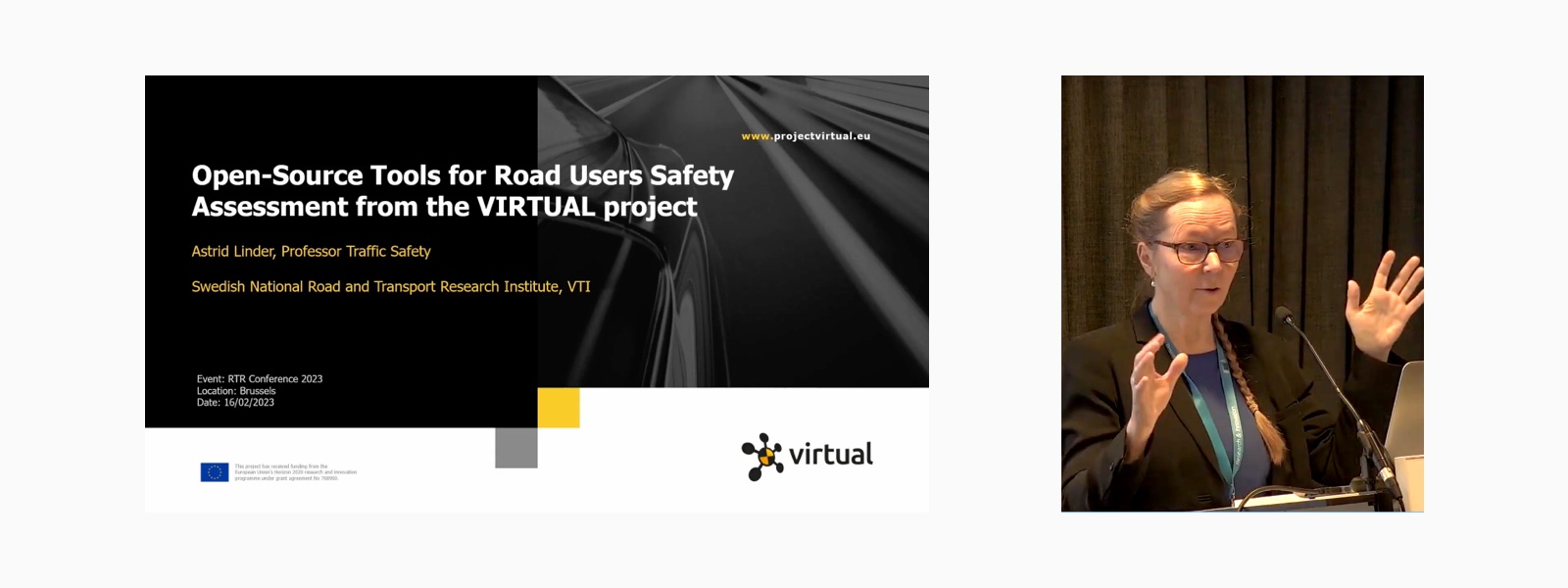The focus of the RTR Conference 2023 was on Horizon2020 projects’ results and expected impacts, and what the next research steps are in essential areas for road transport: Green Vehicles, Urban Mobility, Logistics, Intelligent Transport Systems, Safety, Automated Road Transport. It offered a holistic view on how the European research scene is moving forward in these fields, bringing benefits to the environment, economy, and European society overall. The projects presented in parallel session 13 focussed on two important aspects of road safety: safe driver behaviour including fitness to drive on the one hand and crash safety on the other hand.
The VIRTUAL project presented the world’s first set of open-source human body models based on both the average male and the average female, facilitating the biomechanical representation of both genders in virtual crash testing. The availability of such open-source models for product development and, in future, for regulatory tests and rating schemes in virtual environments is an important step towards inclusive crash safety and towards sharing the respective knowledge. These models come in various body postures, so that they can represent seated vehicle occupants as well as cyclists, pedestrians and standing passengers in public transport. They are available on the OpenVT platform, which has been developed in the VIRTUAL project, as well. In addition, the VIRTUAL project presented the Seat Evaluation Tools SET 50F and SET 50M, representing the average female and the average male, as the physical counterparts of the respective seated human body models.
For a comprehensive overview one can download the summary report of all the sessions.
Have a look at the recording of our session, which took place on 16 February, featuring Astrid Linder:

